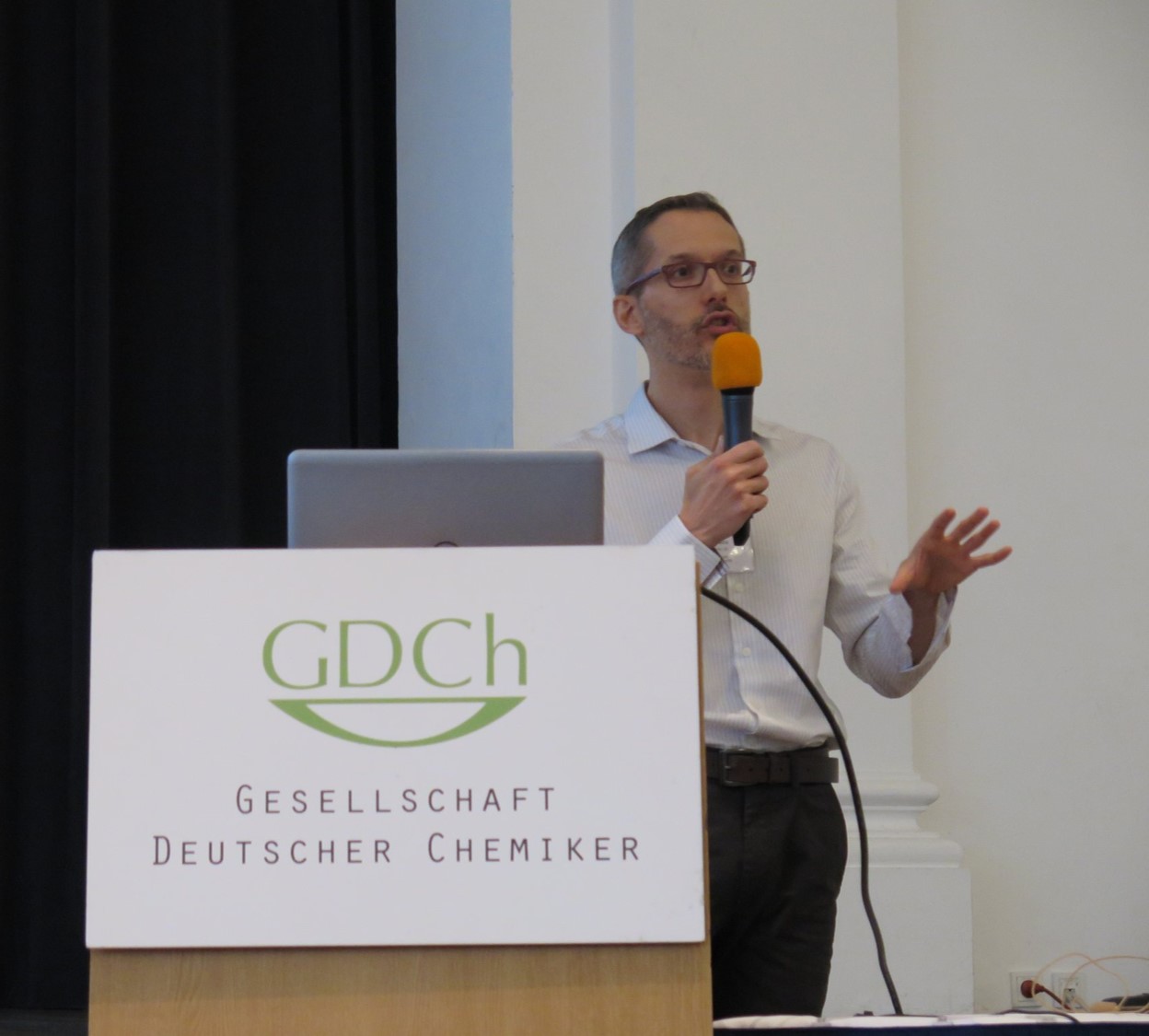Future-proofing Cybersecurity in Drug Discovery
The pharmaceutical and biotech sectors suffer more data security breaches than any other industry, with 53% resulting from malicious activity. To protect against potential ...
News
Professor Dr Paolo Tosco presented 3D-RISM: Better water positions through improved electrostatics? at the German Chemoinformatics Conference, Fulda, Germany. on 7th November.
The Reference Interaction Site Model (RISM) is a modern approach to solvation based on the integral equation theory of liquids[1]. It has seen increasing use as a method to analyse the structure of water in and around protein active sites. The position and energetics of water molecules in and around the active site is known to be of crucial importance in understanding ligand binding, and in particular knowledge of which water molecules are tightly bound and which are energetically unfavourable can give valuable insights into structure-activity relationships.
The accuracy of 3D-RISM depends on the closure used and the functions used to compute the intermolecular potential between the protein and water molecules. In practise, the potential function consists of van der Waals interactions and electrostatic interactions. Increasing the accuracy of electrostatic calculations should therefore give more accurate 3D-RISM water placements and energies.
To date, 3D-RISM has been applied using traditional force fields such as AMBER[2] which utilise simple unpolarised atom-centred charges to represent electrostatic potentials. We have investigated whether a more accurate electrostatic model, XED[3], which provides both polarizability and electronic anisotropy, improves the effectiveness of the 3D-RISM method. As water energetics around a protein active site are not in general experimentally observable, we have in the first instance concentrated on computing water positions and energetics around a range of small molecule model systems, and validated these using DFT calculations with ONETEP[4] and interaction statistics from the CSD. Polarization and electronic anisotropy are found to be particularly important when assessing water structure around carbonyl groups, and the results from AMBER are found to be noticeably unrealistic in many cases. This has important implications for the accuracy of 3D-RISM calculations on protein active sites.
Read about progress in structure-based design at Cresset.
[1] Skyner, R.; McDonagh, J. L., Groom, C. R., van Mourik, T., Mitchell, J. B. O.; Groom, C. R.; Van Mourik, T.; Mitchell, J. B. O. A Review of Methods for the Calculation of Solution Free Energies and the Modelling of Systems in Solution. Phys. Chem. Chem. Phys 2015, 17 (9): 6174.
[2] J.A. Maier; C. Martinez; K. Kasavajhala; L. Wickstrom; K.E. Hauser; C. Simmerling. ff14SB: Improving the Accuracy of Protein Side Chain and Backbone Parameters from ff99SB. J. Chem. Theor. Comput. 2015, 11:3696-3713
[3] J.G. Vinter Extended Electron Distributions Applied to the Molecular Mechanics of some Intermolecular Interactions. J. Comput.-Aided Mol. Des. 1994, 8: 653-668
[4] C.-K. Skylaris; P. D. Haynes; A. A. Mostofi; M. C. Payne Introducing ONETEP: Linear-scaling density functional simulations on parallel computers. J. Chem. Phys. 2005, 122:084119
